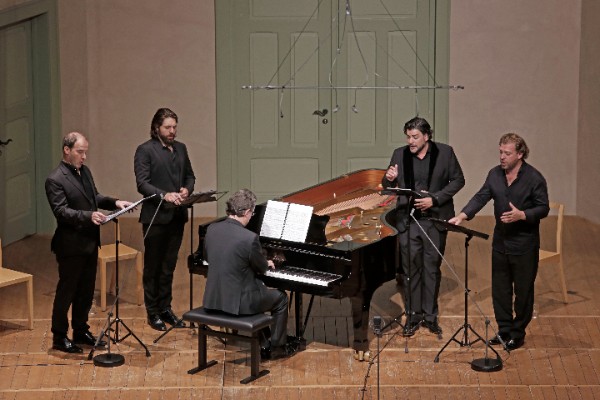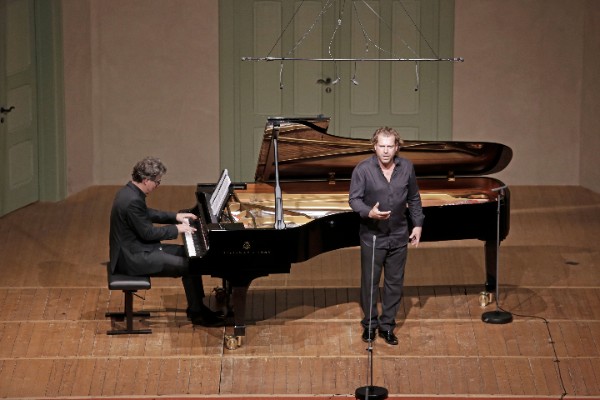The second part of Richard Wagner’s great opera tetralogy, Die Walküre, had its debut at the Green National Opera (GNO) in March 2024. It was a joint production with the Royal Danish Theatre and was the first Ring Cycle production for GNO.
The Greek National Opera presents Die Walkurie
The principal parts came from outside GNO, but the Valkyries and the orchestra were pure GNO. Hunding was sung by Greek bass Petros Magoulas who put across a perfect amalgam of Greco-German rustic hunter. The shrugs, the head motions to get Sieglinde in line, and the roaring were perfect. Sieglinde (Allison Oakes) brought drama to her soprano role and Siegmund was sung by Stefan Vinke, an experienced Heldentenor. Unfortunately, for an opera where Sieglinde and Siegmund have to fall in love at first sight, there was no chemistry between them. If you didn’t know the story, their decision to run away together seems a bit inexplicable. When the siblings fall in love at the close of Act I, it’s signalled by a confetti cannon and champagne for the whole studio.
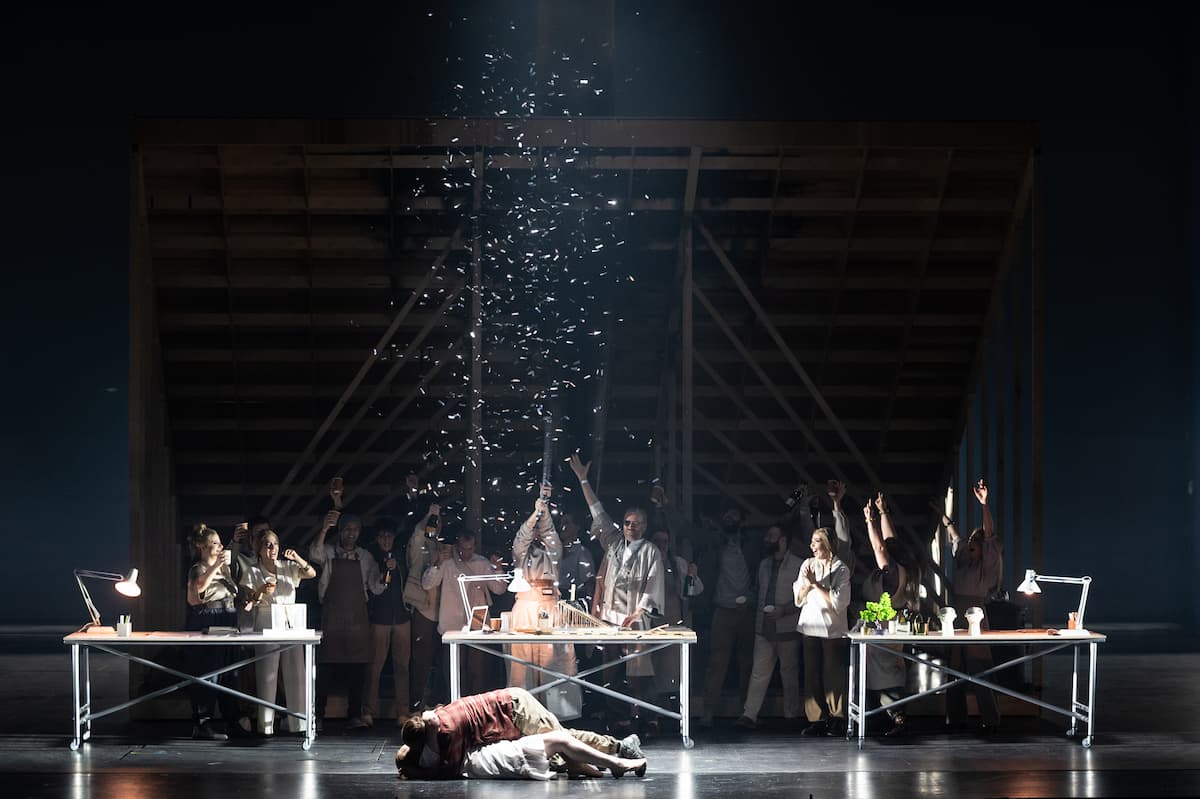
Die Walküre, Act I: Sieginde and Siegmund, with Wotan and the Valkyries celebrating, 2024 (Photo by Giorgos Klakanidis) (Greek National Opera)
Wotan, who is present with his Valkyries from the very start of the opera, albeit on the side in shadow, is head of a modern design studio – rollaway desks, MacBooks, and toy models of the set. As the whole story revolves around the long-term designs he’s had for the world, starting with creating the Valkyries to shepherd the hero warriors of the world into his own army, and fathering Sieglinde and Siegmund as the heroes to save the world, it’s an apt metaphor. This planning takes years and then to have Fricka (Marina Prudenskaya / Hanne Fisher) tell him he must destroy the key part of it, his son Siegmund, is heartbreaking for him.
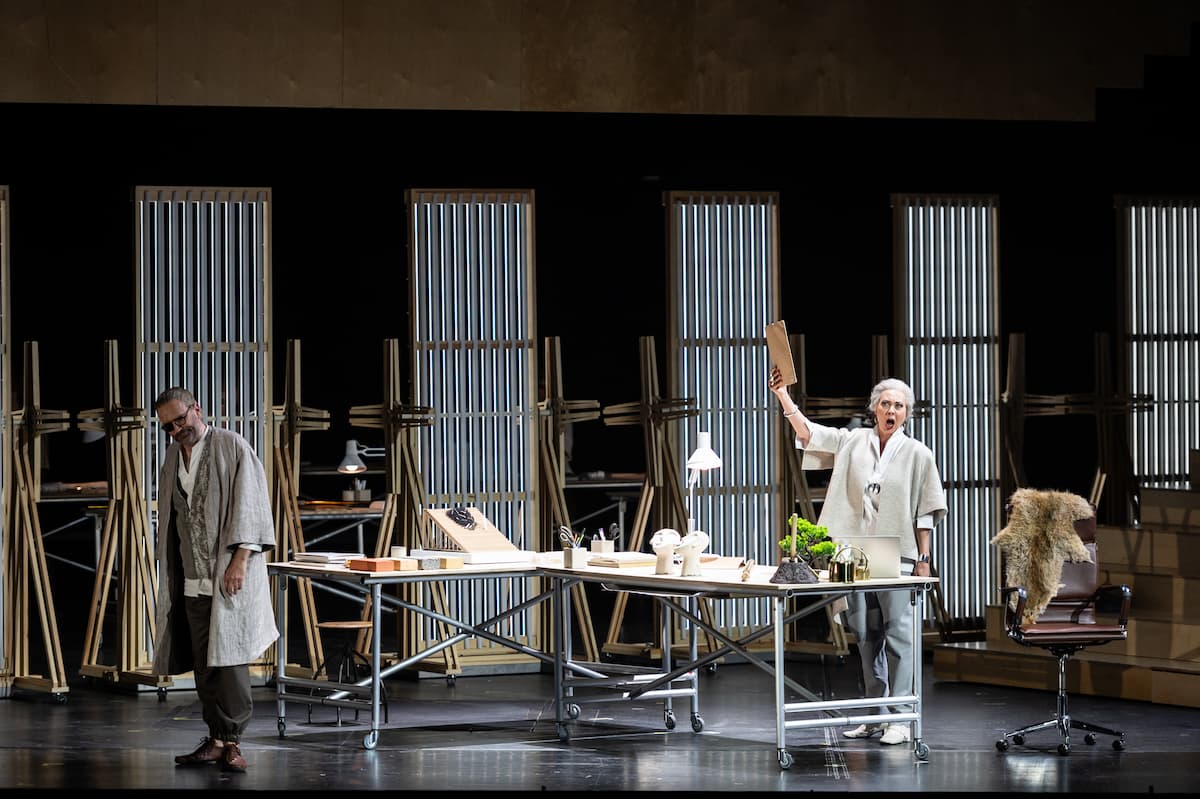
Die Walküre, Act II: Fricka has something to tell Wotan about the project plan, 2024 (Photo by Giorgos Klakanidis) (Greek National Opera)
However, being Wotan, he takes it out on everyone else, especially Brünnhilde. The last act of the opera is practically a blame fest of “look what you made me do to you” pointed at humiliating Brünnhilde for doing what he wanted in his heart and not doing what he said with his mouth.
A major part of the set is a massive moveable staircase that dominates the opening and then is turned to become Hunding’s hut.
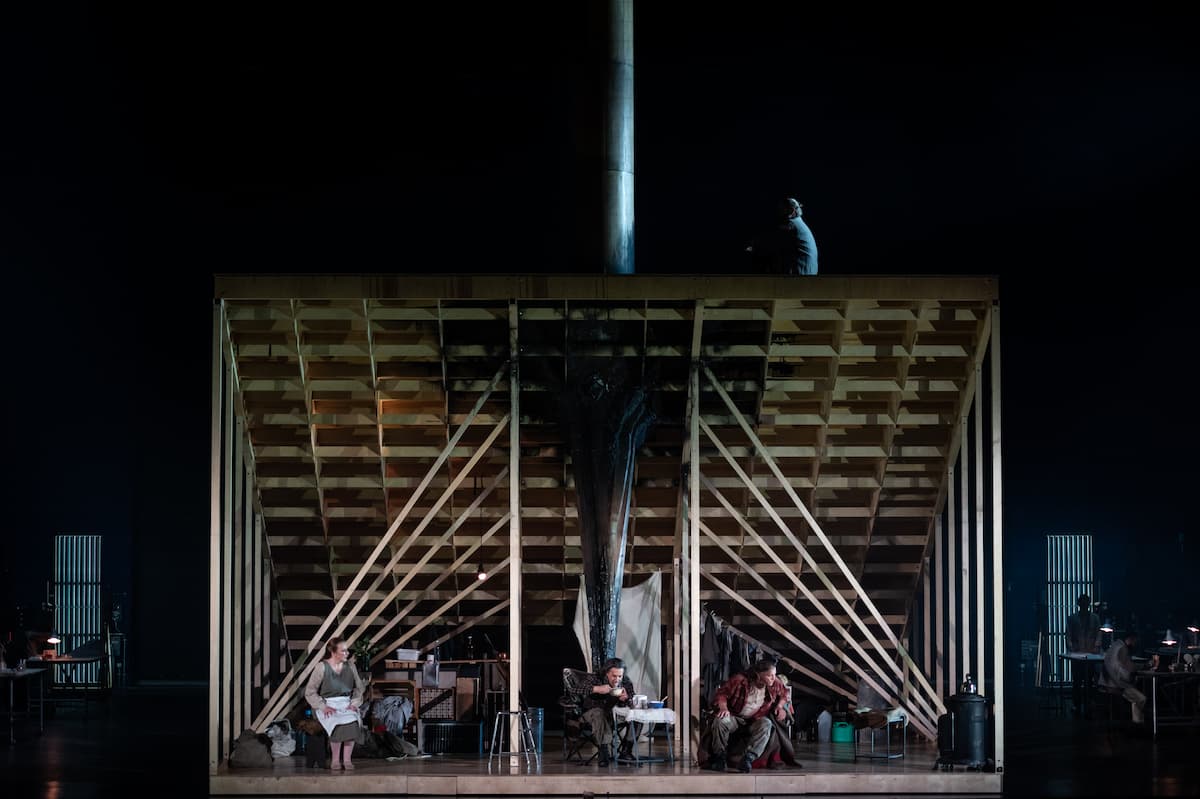
Die Walküre, Act II: Brünnhilde and Wotan with his model of the world, 2024 (Photo by Giorgos Klakanidis) (Greek National Opera)
In Act II, it’s a mountain set at an angle to the stage that the siblings flee down. In Act III, it’s the stairway to Valhalla and that’s where the usefulness of the staircase become problematical. For the monumental Act III entrance of the Valkyries, variously set over the centuries as riding horses in the sky, or sliding down the Machine in the Met production, having them sit on the stairs and stand to make their Hojotoho!s is just anticlimactic. That’s not what the music is telling you is happening. Their full armour is reduced to some nice knitwear. Instead of carrying the dead heroes to Valhalla, the Valkyries stand aside. The heroes are left to enter mid-staircase and struggle, wounded, to the top. Of course, when they meet enemy opponents, they have fights and, of course, someone tumbles down the stairs. All the Valkyries do is stand around, threatening them with their spears, and talking about their horsies.

Die Walküre, Act III: The heroes help themselves to Valhalla, 2024 (Photo by Giorgos Klakanidis) (Greek National Opera)
The heroes are supposed to be DEAD, not the walking wounded. The Valkyries’ responsibility is to get them to the feasting at Valhalla, not act as threatening guards. Sieglinde’s entrance with Brünnhilde (Catherine Foster) at the top of the stairs is dramatic enough, but it’s not until she plays the mother card that she can get any sympathy from the Valkyries.
The Valkyries, played by singers from the GNO, they just didn’t have the unity of eight sisters working for their beloved father in a job that they enjoy doing. More experience in the part, perhaps, would help, but one can’t help thinking that their great opening entrance was a bad start to what they could have done. They didn’t seem to own their parts nor be very individually distinctive.
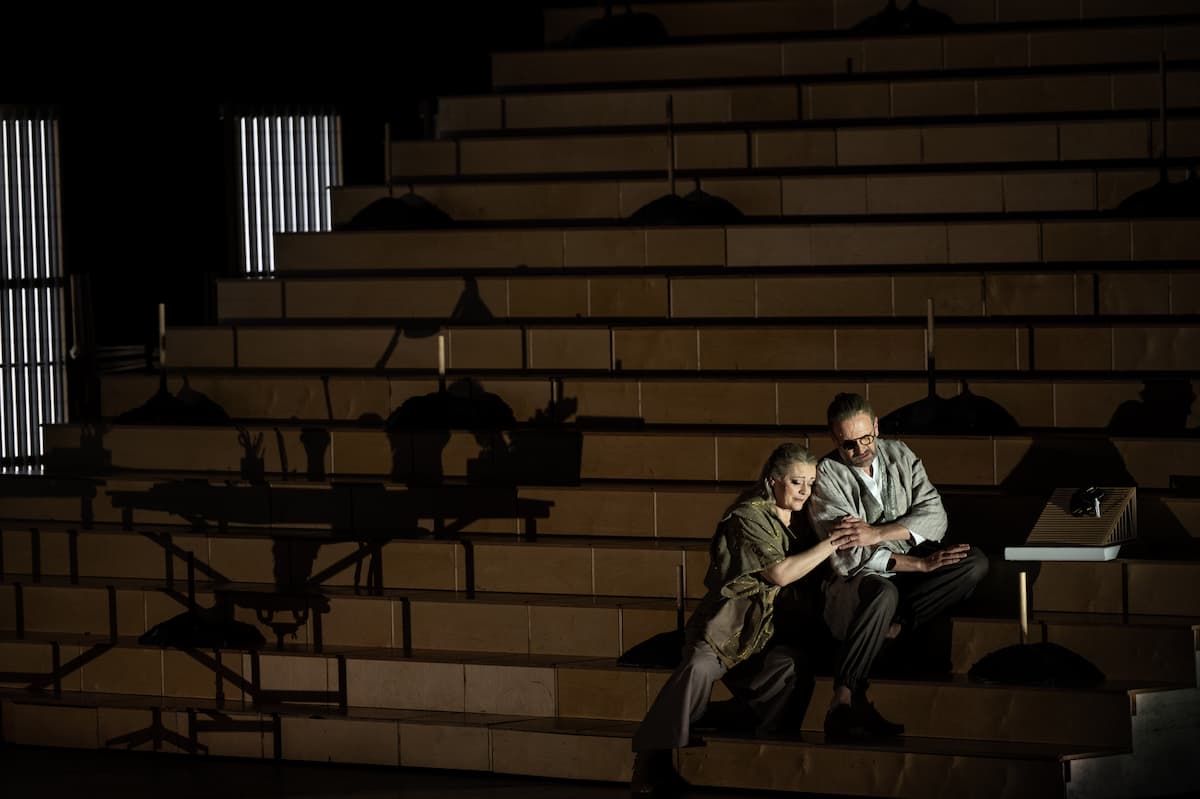
Die Walküre, Act II: Brünnhilde and Wotan with his model of the world, 2024 (Photo by Giorgos Klakanidis) (Greek National Opera)
Wotan’s costume: hipster cool, with long linen jacket and a man bun. No eyepatch for him, but simply a darkened lens on his glasses. As head of the design studio, he and the Valkyries watch from the sidelines, copy of the script in hand, making sure that the great architect’s design is being followed by the foolish mortals.
The GNO orchestra, under conductor Roland Kluttig, drowned out the singers rarely, largely a function of the large empty stage with little reflecting the sound outward. Their performance was outstanding and keeping with the quality we’ve heard from the GNO orchestra.
The staircase in the final act was more of a problem than a benefit – singers clumped up and down, carefully watching that they wouldn’t fall down the stairs. The only one nimble on the stairs was Siegmund, and he wasn’t in the last act at all.
The final scenes of Act III, where Wotan and Brünnhilde make their negotiations for her abandonment on the mountain, were the most moving parts of the entire evening. Wotan must admit his fault and Brünnhilde has to grow in responsibility – no longer can she just do what he says because he will no longer be there for her. So, she negotiates the death of her immortal self and persuades him that it will take a true hero to take her as mortal wife. When the magic fire springs forth as a real fire on stage, the audience was quite taken aback.
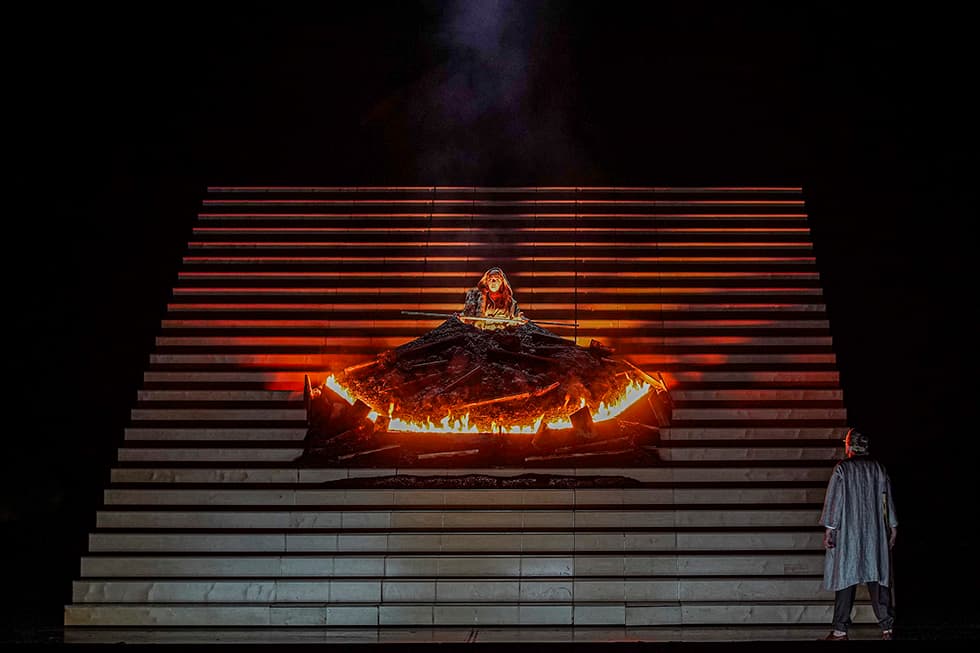
Die Walküre, Act III: Brünnhilde abandoned, 2024 (Photo by Giorgos Klakanidis) (Greek National Opera)
Wagner’s operas are always a daunting evening. Five hours later, however, except for the lack of magic in Act I and the passive Valkyrie scene in Act III, all emotions had been satisfied. Love will move the world forward, until, of course, when in Götterdammerung, it all falls apart. We can’t wait to see what they will do with Siegfried!
Die Walküre
Greek National Opera, co-production with the Royal Danish Theatre
At GNO 10, 13 ,16,19, 24, and 31 March 2024
Stavros Niarchos Foundation Cultural Center
Athens, Greece
For more of the best in classical music, sign up for our E-Newsletter

